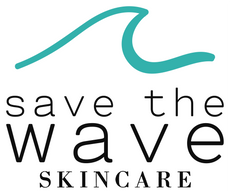Chemical vs. Mineral Sunscreens; What's The Difference?
Sunscreen was first developed in 1930’s and credited to both Franz Greiter and Benjamin Greene. The first sunscreens were a thick combination of cocoa butter and red veterinary petroleum! Greiter is also credited with developing the SPF rating system that we still use today.
You will still see the brand that Green first marketed in the 1940’s, named Coppertone Suntan Cream.
We have come a looooooong way in sunscreen formulations, offering a wide array of creams, lotions, gels, sprays and foams for consumers to choose from.
We can also decide whether we want chemical based sunscreens that work by absorbing ultraviolet rays, mineral based products that reflect UV light, or a hybrid of the two.
Chemical based sunscreens can offer products that can be quite elegant and light. Each chemical absorbs a certain portion of the UV spectrum, so you will often see 3 or more chemical active ingredients in one product.
Some ingredients have been banned in parts of the world, out of concern of damaging delicate reef systems.
Many people with sensitive skin conditions such as eczema, Rosacea, seborrhea or contact allergies, may find products with chemical sunscreens to be more irritating to the skin.
Mineral based sunscreens will have one or two mineral ingredients- zinc oxide and titanium dioxide. These minerals actually reflect UV rays and are generally thought to be the best UV protection. Because they are minerals, they generally do not cause irritation and are best used by those with skin sensitivities.
Historically, mineral based sunscreens are “thicker” and not as elegant. With the advent of micro used formulas, there are plenty of very elegant and light mineral based sunscreens for facial and everyday use!
Another mineral that may be found in sunscreens is iron oxide. This is often the product in tinted sunscreens and helps to “blend” the opaqueness of zinc oxide and titanium dioxide. Iron oxide also helps to protect the skin from blue, and other visible light. This can be especially important for those who have light sensitive skin conditions and those with pigmentary disorders such as melasma, acne pigment or sun spots.
Protecting our skin consistently from the damaging effects from UV exposure decreases our risk for sun damage, photo aging, skin cancer and melanoma.
Whatever formula you choose, be thankful that we are not having to slather red petroleum on our skin each day to stay safe in the sun!







Leave a comment